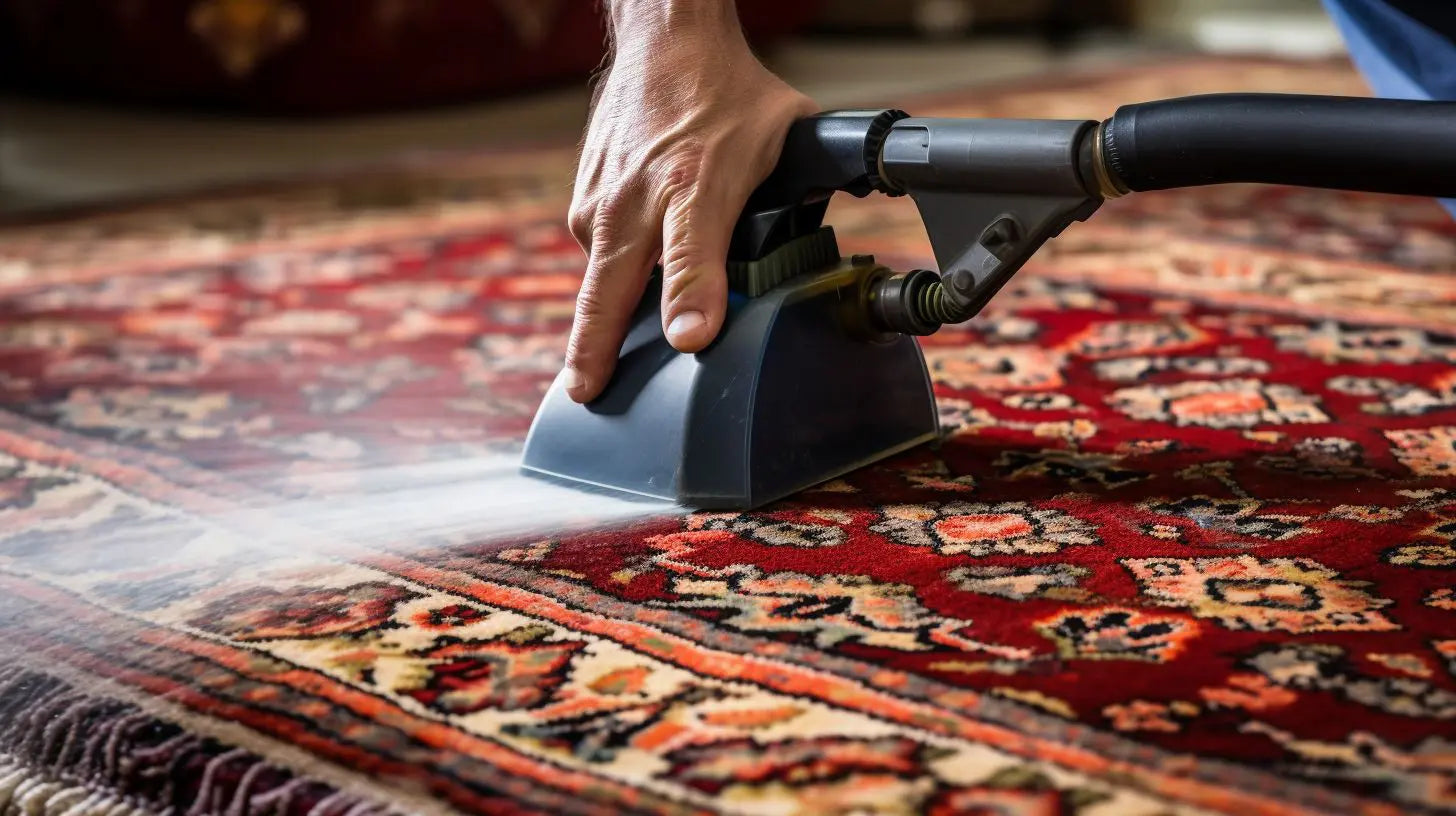Rug Cleaning

Rug Hand Wash Cleaning
Traditional Hand Wash, All Natural Soap and Pure Water Rinse
Oriental Rug Cleaning™ by Rugs & More ensure your rug’s value and beauty for generations. When regularly cleaned every two to three years, Oriental Rug Cleaning™ protects the fibers and revitalizes your rug’s rich colors.
We are proud to offer the only professional Oriental Rug Cleaning™ in town. We identify a bespoke cleansing program for each piece. Our pure water rinse and drying technique, based on traditional practices, is entirely chemical-free and ecologically friendly. This organic process has been practiced for thousands of years.
Additionally, our five-step inspection service helps us, when necessary, recommend repairs and preserve your investment. For your convenience, pick-up and delivery is always available.
Although there are many available options to conduct oriental rug cleaning using machines, many rug owners prefer hand cleaning because of its efficiency and because of the special attention given to the rugs that makes them cleaner.
It is clear that fine rugs deserve high quality and gentle care-something that only hand washing experts can provide. With our approach you can rest assured of proper care for fine oriental rug cleaning. Rugs made from natural fibers, cotton, silk or fine wool is expensive and worth all the care they can get.
There are two major reasons that compel owners to choose hand washing over machine washing for oriental rug cleaning. Natural fibers have a unique ability to hide dirt. Hence, hand washing allows cleaning experts to provide the necessary attention required to make them really clean. Also, conventional cleaning using machines apply high pressure and special chemicals to the rags, that can leave your carpet damaged from high PH or the associated pressures.
Persian and Oriental Rug Cleaning Hand Wash, on the other hand efficiently removes damaging gritty soil from oriental rugs, leaving them colorful, clean and beautiful. The following steps are used when using the hand washing process for oriental rug cleaning. While hand washing is a great option, you’ll be surprised to learn how much dirt vacuums miss — and how simple the best cleaning methods really are. The pitch was simple. In the 1950s, a vacuum salesman would come to the door, spill dirt on the carpet, and ask the lady of the house to clean it with her machine.
Then he would load a fresh bag into his model, run it over the “clean” carpet, and open the bag to reveal what it had picked up. Frequently that was all he needed to close the deal. Had the salesman reversed the order, however, using his machine first, the results might have been the same. Often the problem wasn’t the old vacuum. It was the fact that once dirt goes into carpet, it doesn’t easily come out. The old fashioned method of removing dirt and cleaning by hand still works best. We have shallow, sudsy pools in which the rugs can be washed by hand. This is a very labor intensive procedure but it’s the best way to thoroughly clean both the top fibers and the underlayment.
Most homeowners who use our service are probably washing Oriental, Persian, Moroccan rugs or other hand woven, hand dyed rugs; their value is such that a service like this is the best way to maintain them over decades. Hand cleaning won’t tear or damage the fibers or the weave, and a professional can adjust the cleaning method according to the age and condition of the rug.
Q. What are common mistakes?
A. Putting a plant on a rug. Years later, you take the rug up, and a perfect circle drops out. The pad doesn’t allow air to circulate. A wool rug may feel dry, but moisture has seeped to the bottom. First mildew, then dry rot, and you have to repair.
Q. You say rugs should be washed every two to three years. Why?
A. Even if a rug doesn’t look dirty, it slowly gets duller and the fringe starts to look bad. If you wait, dust, especially silica, sinks down. Whether the base is cotton or wool, when it’s walked on, those pieces saw away at the fiber. That’s what makes a rug go bare, not foot traffic. It’s foot traffic on a rug that hasn’t been swept, beaten and washed — even if it has a good rubber rug pad underneath, which cushions compression.
Q. Can you vacuum too much?
A. Today’s vacuums may be too aggressive, especially if there is hard floor underneath. You need to sweep a wool rug with a carpet sweeper. When you vacuum, once a week or two, use a canister vacuum, and set the beater bar high for less abrasion. Vacuum from side to side, not end-to-end, so you don’t grab the fringe. Take the rug outside once a year and vacuum the back to get embedded dirt out that causes fiber wear. Then vacuum the top again. If you whack a corner and see a dust poof, it needs to be washed.
